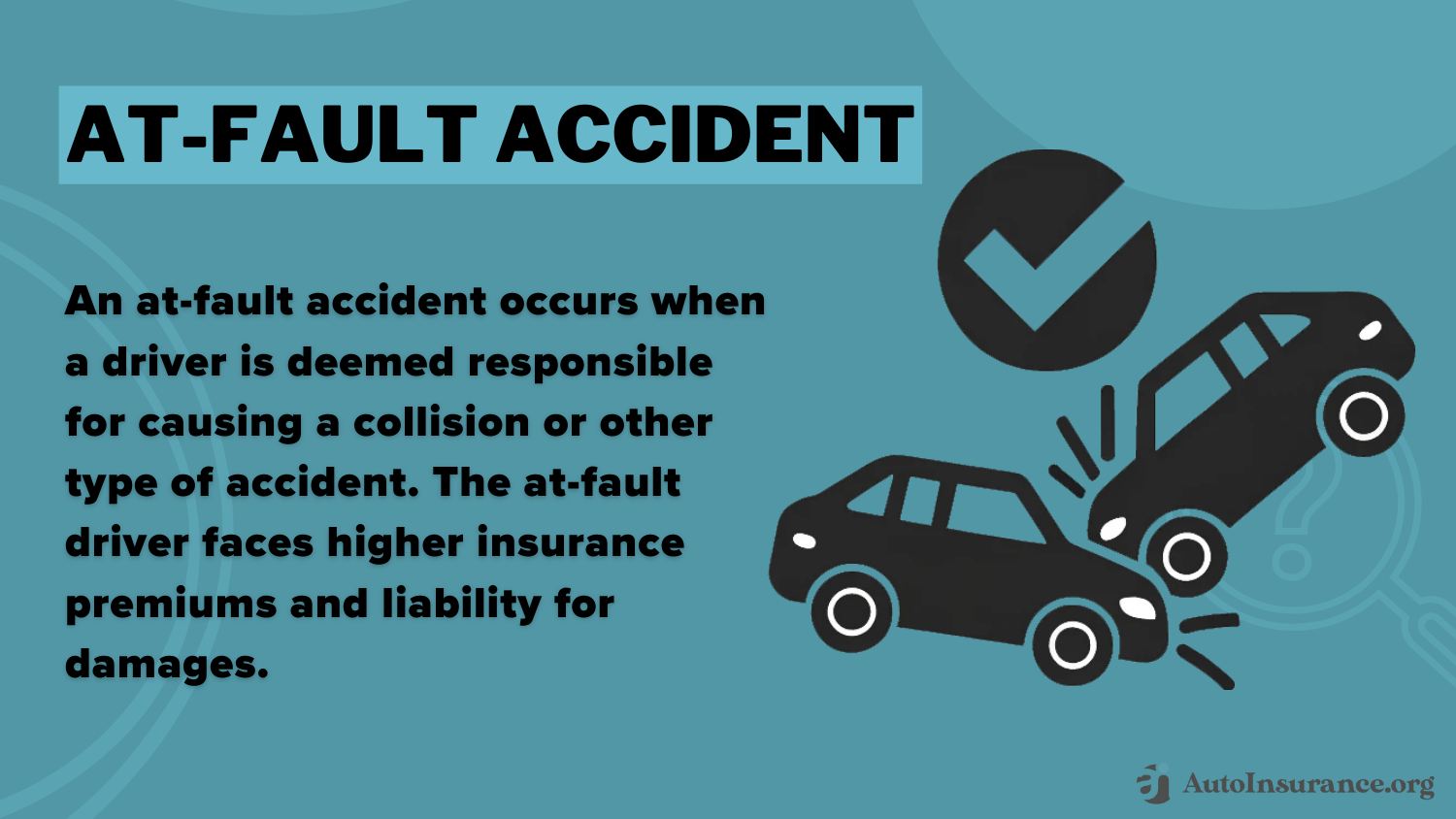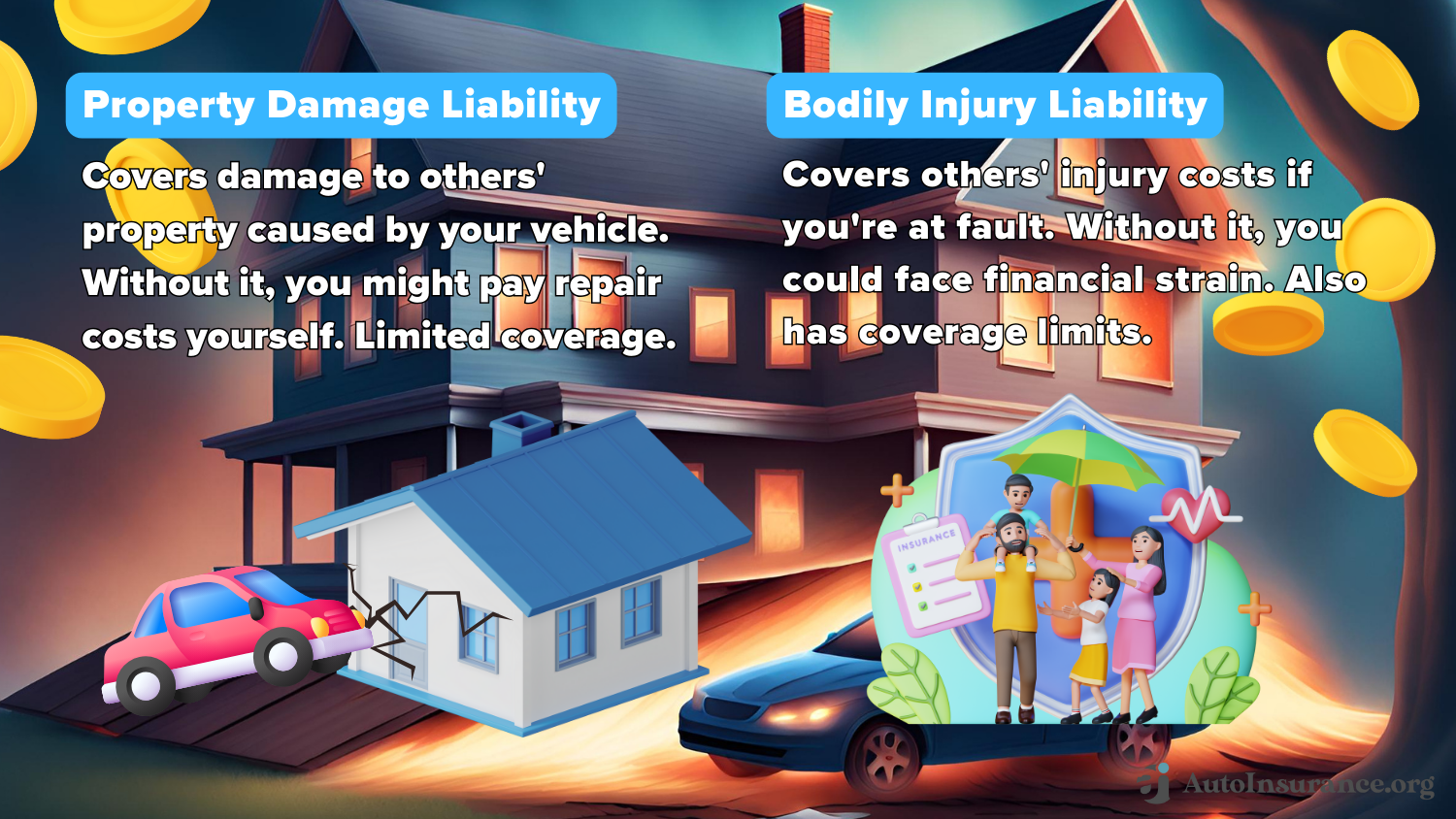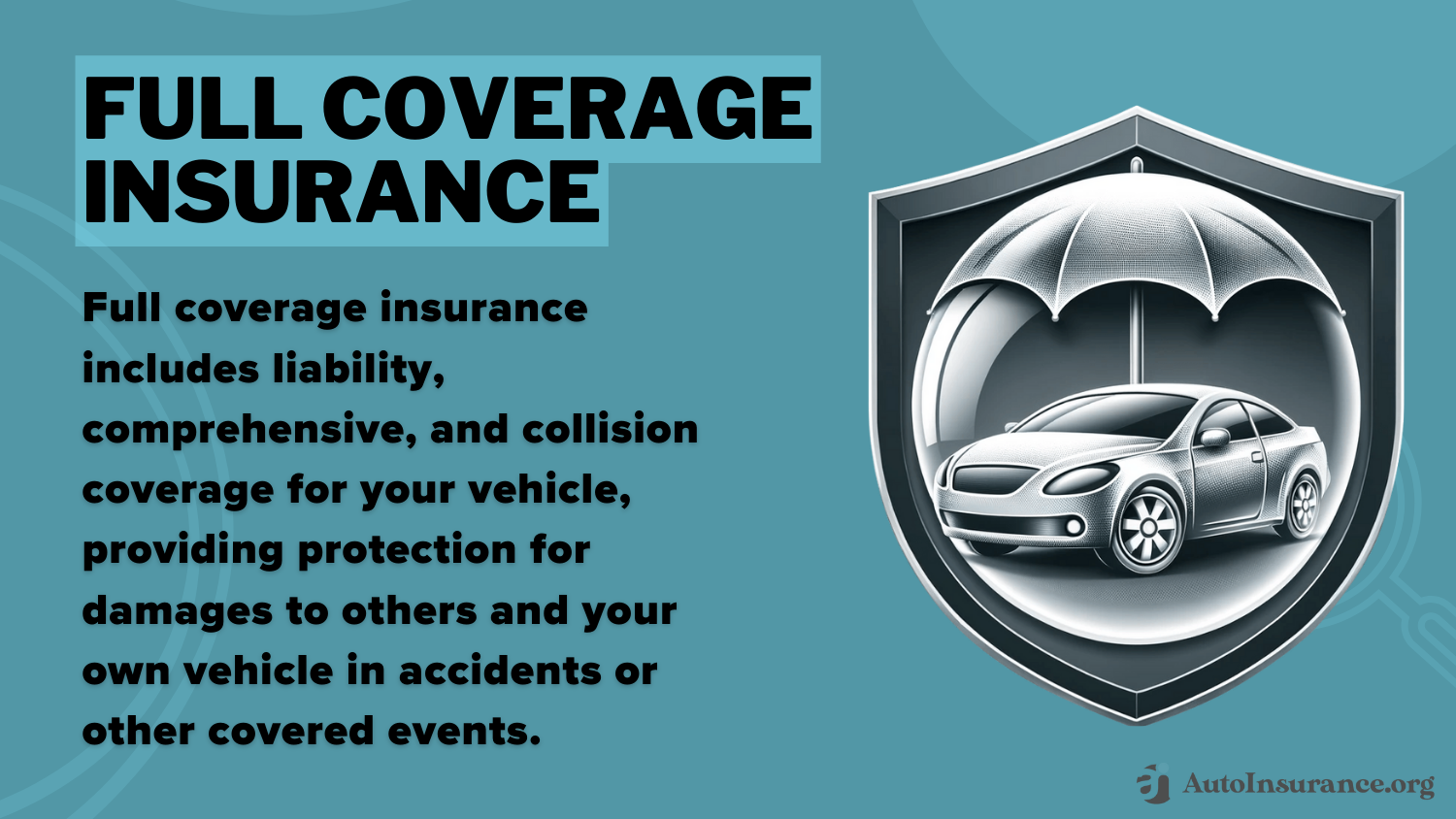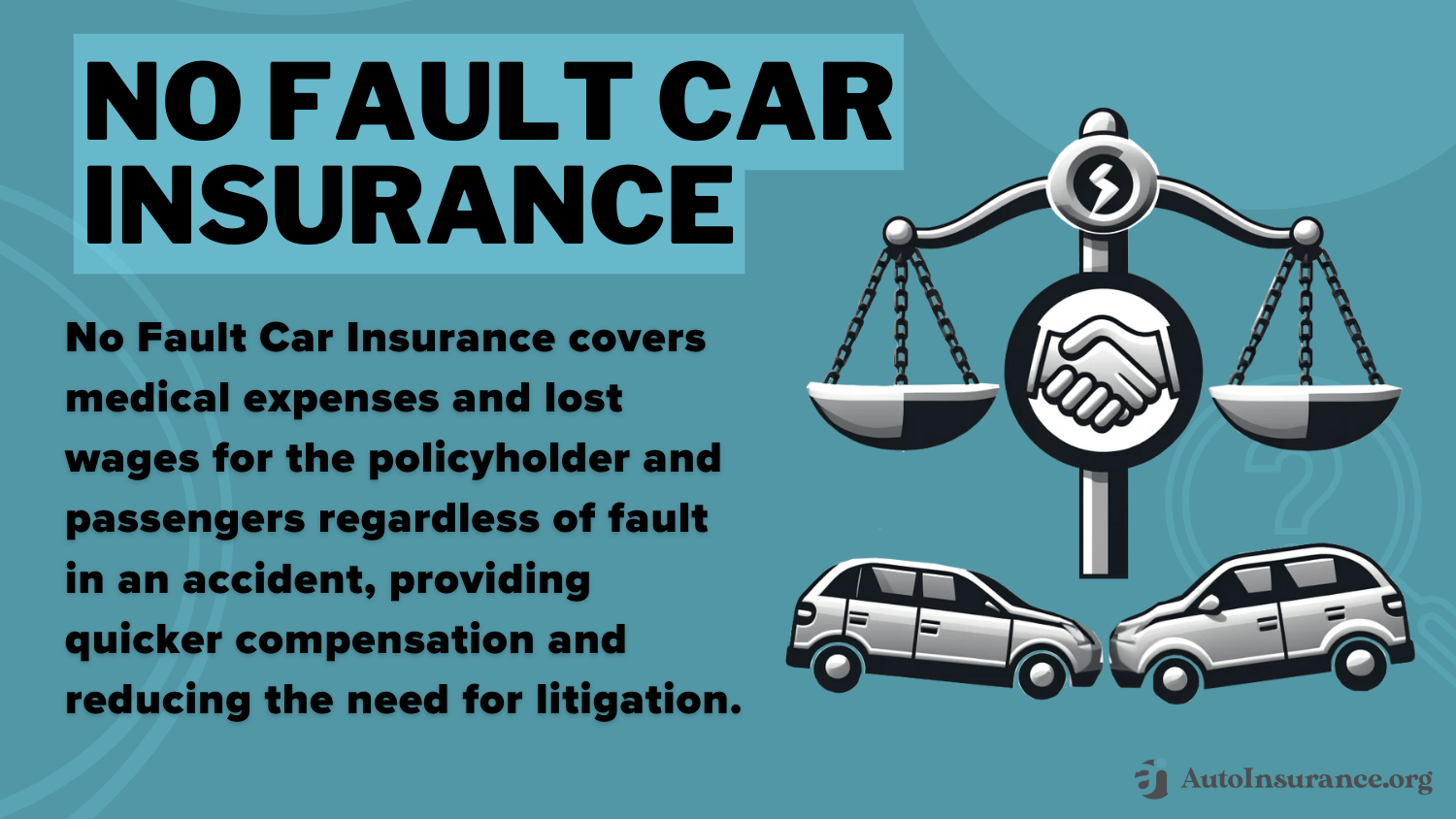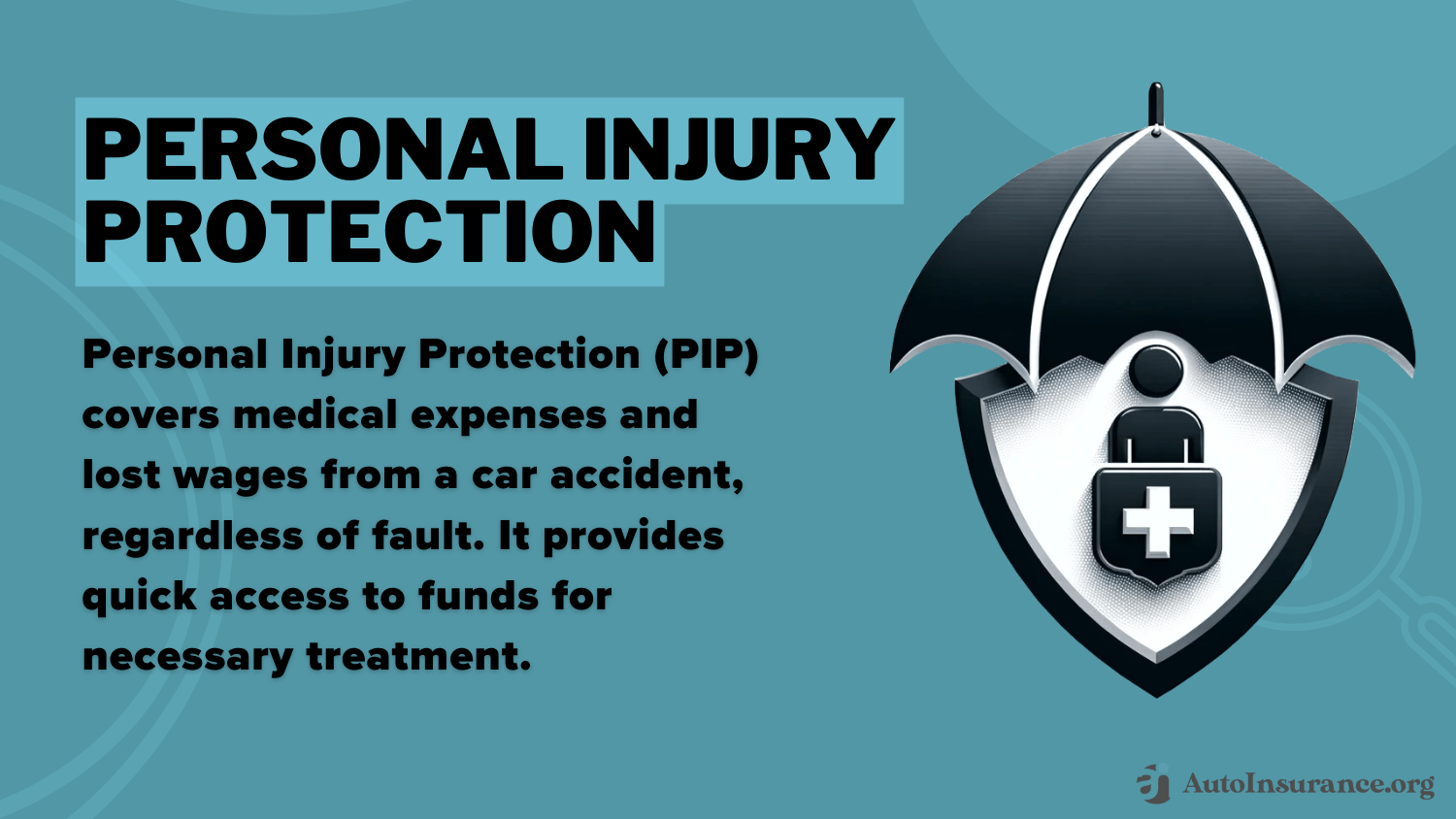At-Fault Accident Defined (2024)
An at-fault accident is when a driver is deemed responsible for an accident, meaning they must cover the other drivers' repair costs and medical bills. Expect rates to go up by around 43% after an at-fault accident. We'll overview the at-fault accident definition and explain some at-fault accident examples below.
Free Car Insurance Comparison
Compare Quotes From Top Companies and Save
Secured with SHA-256 Encryption
Daniel Walker
Licensed Auto Insurance Agent
Daniel Walker graduated with a BS in Administrative Management in 2005 and has run his family’s insurance agency, FCI Agency, for over 15 years (BBB A+). He is licensed as an insurance agent to write property and casualty insurance, including home, life, auto, umbrella, and dwelling fire insurance. He’s also been featured on sites like Reviews.com and Safeco. To ensure our content is accura...
Licensed Auto Insurance Agent
UPDATED: Sep 10, 2024
It’s all about you. We want to help you make the right coverage choices.
Advertiser Disclosure: We strive to help you make confident auto insurance decisions. Comparison shopping should be easy. We are not affiliated with any one auto insurance provider and cannot guarantee quotes from any single provider. Our partnerships don’t influence our content. Our opinions are our own. To compare quotes from many different companies please enter your ZIP code on this page to use the free quote tool. The more quotes you compare, the more chances to save.
Editorial Guidelines: We are a free online resource for anyone interested in learning more about auto insurance. Our goal is to be an objective, third-party resource for everything auto insurance related. We update our site regularly, and all content is reviewed by auto insurance experts.
UPDATED: Sep 10, 2024
It’s all about you. We want to help you make the right coverage choices.
Advertiser Disclosure: We strive to help you make confident auto insurance decisions. Comparison shopping should be easy. We are not affiliated with any one auto insurance provider and cannot guarantee quotes from any single provider. Our partnerships don’t influence our content. Our opinions are our own. To compare quotes from many different companies please enter your ZIP code on this page to use the free quote tool. The more quotes you compare, the more chances to save.
On This Page
What is the definition of an at-fault accident? An at-fault accident is when a driver causes a collision by negligence or carelessness. The at-fault driver is responsible for paying off damages to other vehicles or injuries, which their auto insurance policy can cover.
More than one driver can be at-fault in an accident. In some cases, both drivers will be responsible for accident costs.
An at-fault car accident can raise rates by almost 50% at even the best auto insurance companies. Keep reading to learn what coverages you’ll need and how much at-fault accident car insurance goes up. This guide covers everything you need to know about the at-fault accident meaning and how laws vary in tort and no-fault states.
- At-fault drivers must pay for other drivers’ damages if they cause a wreck
- The at-fault driver will see an increase in insurance rates after the accident
- At-fault accidents will usually stay on a driver’s record for three to five years
At-Fault Accident Defined
What is considered an at-fault accident? In an at-fault accident, it is clear that a driver’s negligence caused the collision. Some examples of careless driving that could result in at-fault accidents include:
- Running a red light
- Not stopping at a stop sign
- Not yielding at a yield sign
- Texting while driving
- Speeding
- Driving under the influence
- Tailgating another vehicle
As the chart below shows, any traffic violation can cause an increase in your car insurance rates.
Auto Insurance Monthly Rates by Driving Record & Provider
| Insurance Company | One Ticket | Clean Record | One DUI | One Accident |
|---|---|---|---|---|
| $195 | $166 | $303 | $237 | |
| $131 | $116 | $177 | $167 | |
| $139 | $111 | $201 | $175 | |
| $176 | $140 | $191 | $199 | |
 | $217 | $177 | $325 | $237 |
 | $145 | $120 | $252 | $165 |
| $143 | $109 | $147 | $190 | |
| $102 | $91 | $124 | $107 | |
| $148 | $107 | $230 | $157 | |
| U.S. Average | $152 | $123 | $218 | $177 |
Any blatant disregard for the road rules that result in an accident will clearly put one driver at fault, meaning they’re responsible to pay any damages or injuries.
Free Auto Insurance Comparison
Enter your ZIP code below to view companies that have cheap auto insurance rates.
Secured with SHA-256 Encryption
How an At-Fault Accident Affects Your Car Insurance Rates
Being responsible for a car accident can significantly raise your auto insurance rates. Your rates will go up depending on how bad the accident was, your insurance company, location, and similar factors. However, you can expect your rates to go up at least a few hundred dollars a year.
To see how much insurance companies increase rates on average for a fault accident, take a look at the data below.
Full Coverage Auto Insurance Monthly Rates for Clean Record vs. One Accident
| Insurance Company | Clean Record | One Accident |
|---|---|---|
| Allstate | $160 | $225 |
| American Family | $117 | $176 |
| Farmers | $139 | $198 |
| Geico | $80 | $132 |
| Liberty Mutual | $174 | $234 |
| Nationwide | $115 | $161 |
| Progressive | $105 | $186 |
| State Farm | $86 | $102 |
| Travelers | $99 | $139 |
| U.S Average | $119 | $173 |
In most cases, the at-fault accident will stay on your record for three to five years, which means you’ll have to pay the increased rate for quite some time. In some cases, however, your insurance company may offer accident forgiveness.
If you qualify and can purchase accident forgiveness, the insurance company will forgive your first at-fault accident, and you won’t face increased rates.
How to Lower Your Premiums After You Cause an Accident
If your rates increase substantially after an accident, don’t panic. There are still ways to reduce your coverage and make your rates more affordable.
Some of the things you can do to reduce your car insurance rates after an at-fault accident include:
- Drive Safely: Maintaining a clean driving record after your at-fault accidents will go a long way to reducing your rates.
- Drop Optional Coverages: If you struggle to afford your insurance, you may consider dropping optional coverages, such as comprehensive insurance or add-ons like roadside assistance.
- Raise Your Deducible: Raising your car insurance deductible can significantly lower your insurance rates if you can afford to pay a higher deductible after an accident.
- Shop Around: A different insurance company may have lower rates than your current one, so it’s important to shop around for cheap auto insurance after an accident and get quotes when your current rates are too high.
- Take Advantage of Available Discounts: Participating in small auto insurance discounts like paperless billing or working towards bigger discounts for defensive driving courses can help reduce your rates.
Just because you caused, an accident doesn’t mean you’ll have high insurance quotes forever. Following the tips above will help you reduce your auto insurance rates to a more reasonable level.
How At-Fault Accidents in Fault vs. No-Fault States Work
Which driver is assigned the fault and is responsible for damage costs depends on whether the state is a fault state or a no-fault state. Check out the table below to see whether your state has a no-fault or at-fault system for car insurance:
At-Fault vs. No-Fault Auto Insurance Laws by State
| State | System |
|---|---|
| Alabama | At-Fault |
| Alaska | At-Fault |
| Arizona | At-Fault |
| Arkansas | At-Fault |
| California | At-Fault |
| Colorado | At-Fault |
| Connecticut | At-Fault |
| Delaware | At-Fault |
| Florida | At-Fault |
| Georgia | No-Fault |
| Hawaii | At-Fault |
| Idaho | No-Fault |
| Illinois | At-Fault |
| Indiana | At-Fault |
| Iowa | At-Fault |
| Kansas | At-Fault |
| Kentucky | No-Fault |
| Louisiana | No-Fault |
| Maine | At-Fault |
| Maryland | At-Fault |
| Massachusetts | At-Fault |
| Michigan | No-Fault |
| Minnesota | No-Fault |
| Mississippi | No-Fault |
| Missouri | At-Fault |
| Montana | At-Fault |
| Nebraska | At-Fault |
| Nevada | At-Fault |
| New Hampshire | At-Fault |
| New Jersey | At-Fault |
| New Mexico | No-Fault |
| New York | At-Fault |
| North Carolina | No-Fault |
| North Dakota | At-Fault |
| Ohio | No-Fault |
| Oklahoma | At-Fault |
| Oregon | At-Fault |
| Pennsylvania | At-Fault |
| Rhode Island | No-Fault |
| South Carolina | At-Fault |
| South Dakota | At-Fault |
| Tennessee | At-Fault |
| Texas | At-Fault |
| Utah | At-Fault |
| Vermont | No-Fault |
| Virginia | At-Fault |
| Washington | At-Fault |
| Washington, D.C. | At-Fault |
| West Virginia | At-Fault |
| Wisconsin | At-Fault |
| Wyoming | At-Fault |
For example, your insurance pays for your medical costs in a no-fault state, meaning each driver must have medical insurance to protect themselves in an accident, regardless of fault.
In an at-fault state, the driver who caused the accident is responsible for paying for damages to others’ vehicles and any medical bills.
Currently, 13 states and territories have no-fault insurance laws, including Florida, Hawaii, Kansas, Kentucky, Massachusetts, Michigan, Minnesota, New Jersey, New York, North Dakota, Pennsylvania, Puerto Rico, and Utah. All other states and the District of Columbia are at-fault states.Laura D. Adams Insurance & Finance Analyst
Keep reading to learn how claims are settled in both types of states so you can better understand the state insurance laws that dictate these different policies.
Accidents in At-Fault States
The driver who caused the accident is responsible for the damages in an at-fault state, meaning their insurance must pay for the other driver’s repair costs and medical bills. So, it’s vital to follow insurance laws and carry the correct liability amounts.
The two coverages needed in at-fault states are property damage liability insurance and bodily injury liability insurance. Not carrying insurance in at-fault states is illegal and will result in the at-fault driver having to pay huge bills out of pocket. In addition, states charge uninsured drivers hefty fines.
Property damage liability will pay up to your policy limit for the other driver’s damages. You’ll have to pay any overages out of pocket, so we recommend you carry a high liability limit. Bodily injury liability also pays up to the policy limit for injuries caused to other drivers, passengers, and pedestrians.
Does full coverage cover at-fault accidents? The answer is yes. Full coverage includes liability protection up to your policy limits if you cause an accident.
Here’s a look at the average annual auto insurance rates for full coverage auto insurance coverage in each state.
However, remember that if you cause an accident and want your insurance company to pay for the damages, you will need to carry collision and comprehensive insurance, also known as a full coverage policy.
Accidents in No-Fault States
In no-fault states, a degree of responsibility is still assigned to the drivers who caused the accident. Whoever caused the crash is responsible for any property damages, such as a smashed fender or broken fence.
However, every driver is responsible for carrying personal injury protection (PIP) or MedPay. Therefore, regardless of who caused the accident, each driver’s liability insurance will pay for their own medical costs. Some states requiring drivers to have PIP to cover their medical expenses are Delaware, Florida, Hawaii, Kansas, Massachusetts, Michigan, Minnesota, New Jersey, New York, North Dakota, Oregon, and Utah.
Even though these states are labeled as no-fault, the driver who caused the accident is still on the hook for property damages and general damages, such as pain and suffering for injuries (where allowed by state law). They just won’t have to pay for the other driver’s medical expenses.
Free Auto Insurance Comparison
Enter your ZIP code below to view companies that have cheap auto insurance rates.
Secured with SHA-256 Encryption
Determining Fault After a Car Accident
Naturally, no one wants to be at fault for an accident and stuck with expensive bills and higher insurance rates. This can lead to multiple disputes over who caused the accident and is responsible for paying for repairs. Ultimately, it falls to the insurance companies to decide who is at fault for the accident.
Some of the things that the insurance company will look at in order to determine fault include:
- Accident location and details
- Dashcam footage
- Damages to vehicles
- Driver statements
- Police reports
- Traffic footage
- Witness statements
In some cases, the blame will be easy to assign. However, if both drivers are partly to blame for the accident, or there are more than two cars involved, it may take longer for insurance companies to figure out who is responsible for what costs.
Suppose you are at fault in an accident. In that case, your insurance is responsible for paying the other driver’s property damage bills and possibly their medical bills, depending on your state. In a no-fault state, even though you don’t have to pay for the other driver’s medical bills, as their insurance will cover it, you may still be sued for more money if their medical bills are astronomical and exceed their coverage.
You must also file your own at-fault collision claim, meaning you’re responsible for your own property damages and medical bills. However, you will only be covered for property damages under your insurer if you carry collision coverage. You will have to pay out of pocket if you don’t have collision coverage.
Always on the go? Our mobile app lets you access your ID card, file a claim, make a payment, and much more. Download now: https://t.co/RRewJ60VKH pic.twitter.com/SLkSEcl7li
— Liberty Mutual (@LibertyMutual) January 31, 2023
Learn More: How to File an Auto Insurance Claim
Because of the financial responsibility that falls on at-fault drivers, you may wonder — can you fight an at-fault accident? Unfortunately, unless a mistake was made in the reports unfairly assigning blame to you, it is hard to contest your fault in an accident in most cases.
What to do After You Cause an Accident
What happens after a car accident that is your fault? If you caused the accident, it is important to keep yourself safe and document the scene.
Some of the basic steps you should take after an accident, no matter who caused it, are:
- Move Your Car if Possible: If the vehicle is driveable, you should move it out of the way of traffic. You should also put on your hazards to make the car more visible to other drivers.
- Check for Injuries: Make sure to check for injuries on both you and anyone else involved. If anyone is seriously injured, do not attempt to move them.
- Call the Authorities: To avoid being charged with a hit and run, call the police to come to handle the situation and remain until they arrive. If someone is injured, request an ambulance as well. Police may give you a ticket, but it’s important to call them.
- Exchange Driver Information: Make sure to take down all the other driver’s information and provide them with your information, such as insurance information, names, and phone numbers. The police will assist in this process.
- Document the Damages: It is important to take plenty of pictures of the accident, so you have your own photographic proof of damages in addition to the police’s documentation.
- Contact Your Insurer: Call your insurance company to inform them about the accident. Then, if applicable, file an at-fault claim, meaning you get a payout for an at-fault accident. (Read More: Whose insurance do I call after an accident?)
Properly documenting the scene and getting help from the police will help ensure that the other involved parties don’t try to change the story later to get more money.
Everything You Need to Know About At-Fault Accidents
Regardless of your state’s laws, causing an accident will result in higher insurance rates. In at-fault states, whoever caused the accident will be responsible for all parties’ medical and property damage bills.
Look into car insurance discounts from the top providers to see if there’s any way you can lower your rates after filing a claim. For instance, cars with certain safety features may qualify for various savings, such as the anti-theft auto insurance discount.
In no-fault states, at-fault drivers are only responsible for property damage bills and compensation for pain and suffering from injuries to others (where allowed). Drivers must carry PIP or MedPay in these states to pay for medical bills after an accident, regardless of who is at fault.
After an at-fault accident, your rates will be higher. Search around for cheap auto insurance rates after an accident so you can save as much as you can. Use our free quote comparison tool to find the best auto insurance rates in your area.
Free Auto Insurance Comparison
Enter your ZIP code below to view companies that have cheap auto insurance rates.
Secured with SHA-256 Encryption
Frequently Asked Questions
What does at-fault accident mean?
A top question readers ask is, “What does at fault mean in a car accident?” An at-fault accident means that a driver has been deemed responsible for causing a car accident.
How do insurance companies decide which driver is at fault?
Insurance companies use adjusters to gather and analyze evidence, such as police reports, witness reports, and photos of the damages. They assess this information to determine which driver was at fault, meaning they’re responsible for causing the accident based on traffic laws and circumstances.
Insurance companies will use adjusters to gather as much information as possible about the accident, such as pictures of the damages, police reports, witness reports, and more. The insurance adjuster will then determine who is at fault based on the evidence provided.
Will the insurance company fix my car if I’m at fault?
Can you claim auto insurance if it’s your fault? Yes, if you carry more than liability insurance. Depending on the accident type, you would file an at-fault claim with your comprehensive or collision insurance.
For example, if you run into a deer, you would file with comprehensive. If you rear-end another vehicle, you will file with collision. However, if you only carry liability insurance and are at fault in the accident, you will have to pay out of pocket to fix your car.
Does it matter which driver caused the accident?
Yes, it matters who caused the accident. The responsible party’s insurance will have to pay for repairs and injuries, so insurance companies have a vested interest in who is at fault in an accident.
Does fault matter in no-fault states?
Who caused the accident doesn’t matter when it comes to injury claims resulting in medical bills. Injured parties must file claims for medical bills under PIP or MedPay coverage in no-fault states. However, fault does matter when it comes to property damages. The responsible driver’s insurance will have to pay for the other driver’s vehicle repairs.
Enter your ZIP code into our free comparison tool below to get cheap no-fault auto insurance quotes from the top providers near you.
What will happen if both drivers are at fault?
In cases where both drivers are at fault for an accident, the blame will be shared between the drivers. The state’s negligence laws will determine how much of the damage costs for which each driver is responsible. If one driver were more at fault than the other, that driver would be responsible for a higher percentage of costs.
Read More: Auto Insurance Laws
What should I do if the at-fault driver wants to pay out of pocket?
Obtain a written agreement from the driver if they wish to pay for damages out of pocket, detailing the terms and payment amount. Then, notify your insurer to protect yourself in case the driver doesn’t follow through.
Can more than one driver be at fault in an accident?
Yes, it is possible for more than one driver to be at fault in an accident. In such cases, both drivers will be responsible for the costs associated with the accident.
How much can my insurance rates increase after an at-fault accident?
Being responsible for a car accident can significantly raise your auto insurance rates. The increase will depend on various factors such as the severity of the accident, your insurance company, location, and other similar factors. On average, you can expect your rates to go up at least a few hundred dollars per year.
Will full coverage insurance cover at-fault accidents?
Yes, full coverage insurance includes liability protection that covers at-fault accidents up to your policy limits. However, to have your insurance company pay for damages, you would need collision and comprehensive insurance.
Can I take a defensive driving course to offset the impact of an at-fault accident?
Yes, completing a defensive driving course can sometimes help offset the impact of an at-fault accident. Some insurance companies offer discounts for completing these courses, which can help reduce your overall insurance rates.
Can I dispute the determination of fault made by my insurance company?
Yes, you can dispute the determination of fault made by your insurance company. If you believe that the assessment was incorrect or unfair, you can provide additional evidence or documentation to support your case. Contact your insurance provider for information on their dispute resolution process.
Is there a way to win an at-fault accident?
You may be wondering how to win an at-fault accident case. To win an at-fault accident case, gather evidence to support your case, such as witness statements, camera footage, and police reports. You could also speak with a lawyer to help build your case’s foundation.
Does full coverage cover at-fault accidents?
Yes, full coverage auto insurance will pay out for at-fault car accidents.
How does insurance work when it’s not your fault?
Generally, the other driver’s liability coverage will pay for your damages and injuries if they were at fault. So, file a claim with their provider to get compensation. However, if the driver was uninsured, you’ll need uninsured/underinsured motorist coverage to pay for repair costs and medical bills.
Ready to find the best uninsured and underinsured motorist (UM/UIM) coverage? Simply enter your ZIP code into our free quote comparison tool below to get started.
What happens if you are at fault in a car accident in California?
In California, you’re responsible for covering all damages and injuries you caused, which liability auto insurance covers. Learn more about California auto insurance laws here.
Free Auto Insurance Comparison
Enter your ZIP code below to view companies that have cheap auto insurance rates.
Secured with SHA-256 Encryption
Daniel Walker
Licensed Auto Insurance Agent
Daniel Walker graduated with a BS in Administrative Management in 2005 and has run his family’s insurance agency, FCI Agency, for over 15 years (BBB A+). He is licensed as an insurance agent to write property and casualty insurance, including home, life, auto, umbrella, and dwelling fire insurance. He’s also been featured on sites like Reviews.com and Safeco. To ensure our content is accura...
Licensed Auto Insurance Agent
Editorial Guidelines: We are a free online resource for anyone interested in learning more about auto insurance. Our goal is to be an objective, third-party resource for everything auto insurance related. We update our site regularly, and all content is reviewed by auto insurance experts.

